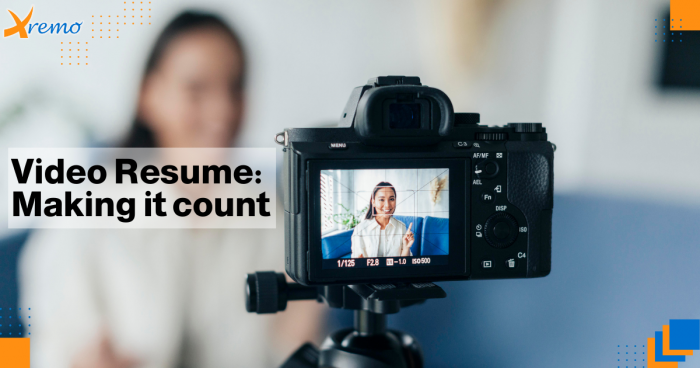How to attract the hirer’s attention with Video Resume
As we said in our previous post, preparation is key for presentation yet the ability to change your approaches fast is also flexibility on your part to see what really needs to be put on the table. In doing up a video resume, we present to you some useful tips here which is basically common sense.
Speaking and Presenting
Our recommendation for a video resume is to use a common app that is found on most computers and that is Powerpoint. Common and hassle free, Powerpoint can be used to display some of your written information on some slides and you can dedicate one of those slides to play the video of you speaking. In this way, you get to highlight and emphasise certain points and have the video together in one file. Its transitions and animations are cool too.
Dress the part
Now that you’re about to record your video. Please dress as though you’re going to an actual interview. Dressing professionally is extremely important as the camera receives your best looking self. Social distancing has made it difficult for us in this area so we just have to think that there’s real person on the other side of that camera.
Location, location, location and lighting
Choose a well lit place with a neutral background wall. When recording, use a real background instead of a background photo or screensaver as this works better with lighting.
Recording
Prepare yourself by practicing your English pronunciation with scripted notes. This is really the second most important thing, how you communicate. Speak your words clearly, with the right intonation and sound. Wrap a piece of foam around your microphone to dim all the ambient noise that’s coming from outside. Practice repeatedly till you’re confident. It’s also a good idea not to go solo as practice is to help you get off that nervous grip. Ask someone to help you practice your pronunciation and also to be a camera person.
Start with short sentences and go from there
You don’t have to finish the video in one go but do it in parts and stitch it together. You’ll get better with practice. Keep all interruptions such as pets away and phones in silent mode.
Conduct and Communicate Yourself
Now that we’ve got all that out of the way, let’s come over to the most important thing. Conducting and communicating is an art of selling yourself. The Mehrabian rule of 7, 38, 55 is what we will explore a bit.
Albert Mehrabian is a professor of psychology at the University of California. He deduced that only 7% of what we say convey our intended meaning. Then, 38% of our vocal tones (enunciation and pronunciation) meaning the way we say something louder or softer and everything in between. The last 55% is simply body language like facial expressions and hand movements. What a difference in ratio! Only 7%.
Just imagine if you’re just talking without any highs and lows in your speech (voice inflection) and no natural hand, head and body movements. This means that only 7% of your value is getting across to the interviewer and they’re just not getting the full picture about you.
This is something to think about when you get around to record your video. The focus is certainly going to be half your body (head to waist). What you need to include is the other 38 & 55% in. Make your audience feel that 7, 38, 55. These are the keys to selling yourself with that video resume.
So I’m ready now. I’ve done my video resume
Yes, Phew! You’re done recording all you need to tell. But is that enough? Well, there is one more step before you close and that is….ta daaa!
Closing questions
You can say, “In closing I would like to thank you for your time and I would like to ask a question or two”.
Don’t just say, Thank you for your time and goodbye. Use this golden moment to stake your claim with an unavoidable response from them. Use questions like:
- Now that I’ve presented myself, how do you see me working for your organisation?
- Now that I’ve presented myself, May I know when do you plan to have a face to face interview?
- Now that I’ve presented myself, what are the next steps that I can expect?
Answering Expectations
The key word that mobilises people to action is expectation. We all have a sense of duty and expectation. This final step seems to put the ball in their court but in reality is to simply make them think that they owe you an answer. The key is to keep the ball in your court and if they want it, they have to start responding. Asking the right questions let’s you set them up for a response. If they are serious and if their company is worth your while, they will find the unavoidable urge to respond. It’s the professional thing to do.


